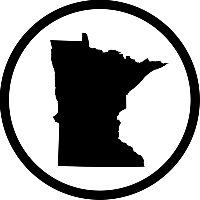Baptisia, Blue False Indigo 'Minnesota Native'




Out of stock
Coming soon, still growing- Sun Preference
- Full-Sun, Part-Sun
- Bloom Time
- May, June
Description
2010 Perennial Plant of the Year. Blue-green leaves and strong stems with long tapering spikes of indigo-blue, pea-shaped flowers in early summer. Seed pods turn black in the fall and winter for added interest. Very adaptable and long lived.
Minnesota's Largest Selection of Perennials
Discover an unparalleled selection of perennials at Gertens! With the largest variety in Minnesota, we offer endless options of colorful perennials, natives, and pollinator plants to beautify your garden year after year. From vibrant flowers to lush foliage, our perennials are perfect for adding beauty and charm to your outdoor space. Visit Gertens today and see why we're known as Minnesota's Destination Garden Center!
Details
Blue False Indigo | Baptisia australis
Height: 4 feet
Spread: 4 feet
Sunlight: full sun to partial shade
Hardiness Zone: 3a
Other Names: False Indigo, Blue Wild Indigo
Brand: Gertens
Description:
Blue-green leaves and strong stems with long tapering spikes of indigo-blue, pea-shaped flowers in early summer
Ornamental Features
Blue False Indigo has masses of beautiful spikes of indigo pea-like flowers rising above the foliage from mid spring to early summer, which are most effective when planted in groupings. The flowers are excellent for cutting. Its round compound leaves remain olive green in color throughout the season.
Landscape Attributes
Blue False Indigo is an herbaceous perennial with an upright spreading habit of growth. Its medium texture blends into the garden, but can always be balanced by a couple of finer or coarser plants for an effective composition.
This is a relatively low maintenance plant, and is best cleaned up in early spring before it resumes active growth for the season. It is a good choice for attracting bees and butterflies to your yard. It has no significant negative characteristics.
Blue False Indigo is recommended for the following landscape applications;
- Mass Planting
- General Garden Use
Planting & Growing
Blue False Indigo will grow to be about 4 feet tall at maturity, with a spread of 4 feet. It grows at a slow rate, and under ideal conditions can be expected to live for approximately 25 years. As an herbaceous perennial, this plant will usually die back to the crown each winter, and will regrow from the base each spring. Be careful not to disturb the crown in late winter when it may not be readily seen!
This plant does best in full sun to partial shade. It is very adaptable to both dry and moist growing conditions, but will not tolerate any standing water. It is not particular as to soil type, but has a definite preference for alkaline soils, and is able to handle environmental salt. It is somewhat tolerant of urban pollution. This species is native to parts of North America.
More Information
| Common Family Name | False Indigo |
|---|---|
| Gerten Grown Plants | Gerten Grown Plants |
| MN Native Plants | MN Native Plants |
| Sun Preference | Full-Sun, Part-Sun |
| Bloom Time | May, June |
| Mature Spread (Range) | Over 36" |
| Mature Height (Range) | 37" - 48" |
| USDA Hardiness Zone | 3, 4, 5, 6, 7, 8, 9 |


